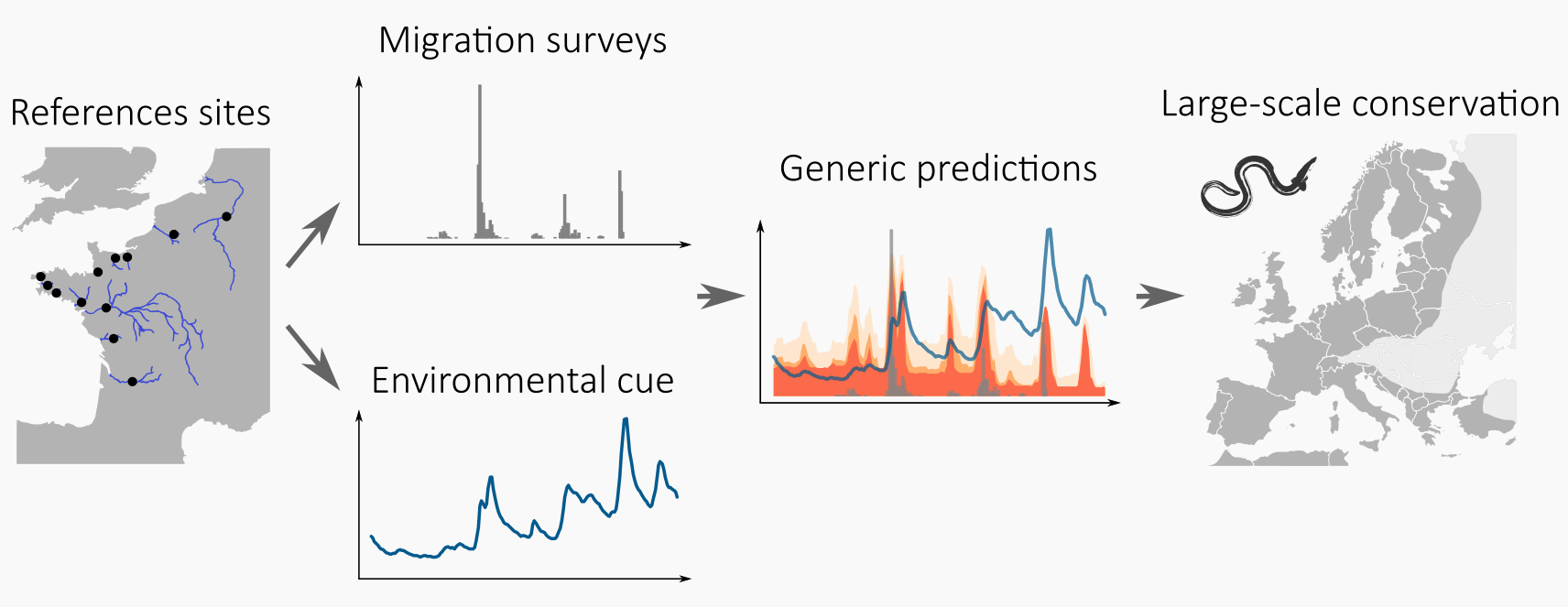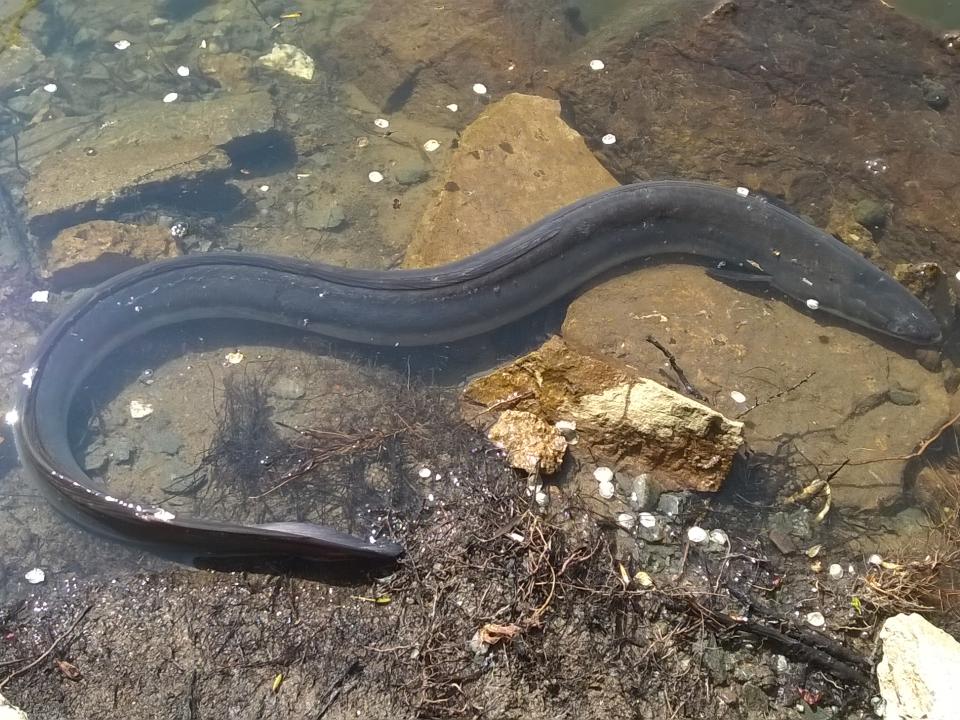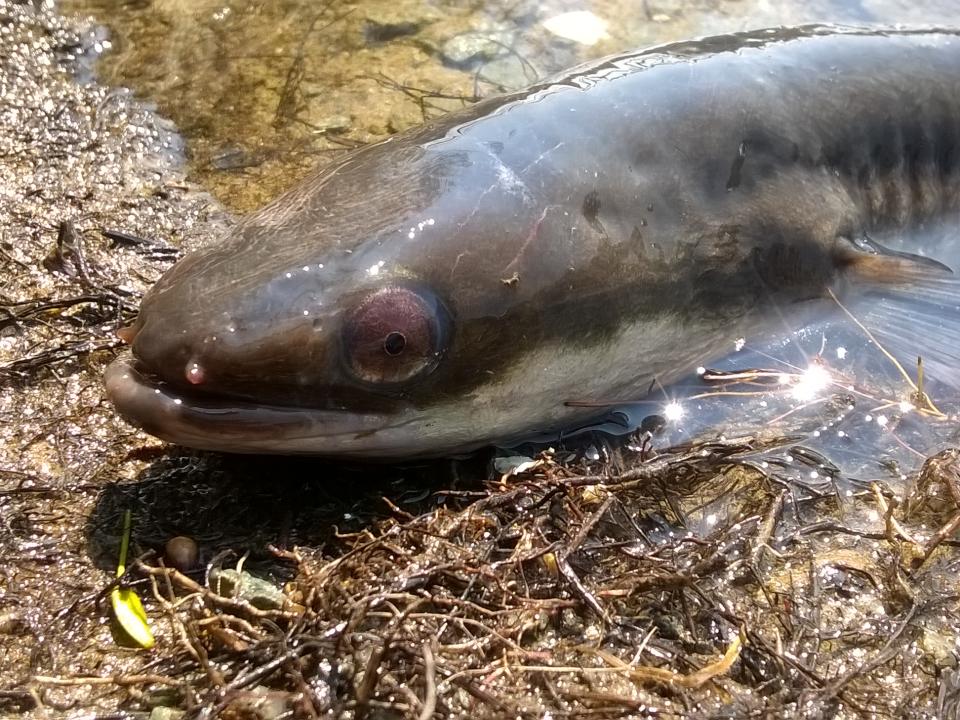Teichert, N., Tétard, S., Trancart, T., de Oliveira, E., Acou, A., Carpentier, B. Bourillon & Feunteun, E. (2020). Towards transferability in fish migration models: A generic operational tool for predicting silver eel migration in rivers. Science of The Total Environment, 739: 140069. https://doi.org/10.1016/j.scitotenv.2020.140069
In the global context of river fragmentation, predicting fish migration is urgent to implement management actions aimed at protecting and promoting the free movement of diadromous fish. However, large-scale applicability of conservation measures requires transferable models that enable prediction of migration even in data-poor regions. Here, we surveyed 12 contrasted European river sites to predict the activity peaks of silver eels (Anguilla anguilla) during river migration towards spawning areas through an ensemble modelling approach. Site-specific Boosted Regression Tree (BRT) models were adjusted using standardized hydrological variables to predict migration probability, which were aggregated in consensus predictions. Results of independent cross-validations demonstrated that silver eel migration runs were accurately predicted in response to changes in river discharge. Transferability and predictive performance were improved by considering catchment-size dissimilarity between river sites (85 to 109 930 km²) when combining the site-specific predictions. Nevertheless, we provided two examples for which the effects of human actions on flow conditions were so high that they prevented reliable predictions of migration runs. Further contributions should thus take advantage of the flexibility of our approach for updating model collection with new sites to extend the predictive performance under a larger range of ecological conditions. Our transferable hydrological-based modelling framework offers an opportunity to implement large-scale management strategies for eel conservation, even in rivers where eel monitoring data lack. The BRT models and prediction functions were compiled in an R package named ‘silvRpeak’ to facilitate operational implementation by end-user managers, which can determine when mitigation measures should be implemented to improve river continuity (e.g. turbine shutdown and sluice gate opening) and balance their economic activity towards eel conservation. The only input required is discharge records that are widely available across European hydrological stations.
BOREA contact: Nils Teichert
In the global context of river fragmentation, predicting fish migration is urgent to implement management actions aimed at protecting and promoting the free movement of diadromous fish. However, large-scale applicability of conservation measures requires transferable models that enable prediction of migration even in data-poor regions. Here, we surveyed 12 contrasted European river sites to predict the activity peaks of silver eels (Anguilla anguilla) during river migration towards spawning areas through an ensemble modelling approach. Site-specific Boosted Regression Tree (BRT) models were adjusted using standardized hydrological variables to predict migration probability, which were aggregated in consensus predictions. Results of independent cross-validations demonstrated that silver eel migration runs were accurately predicted in response to changes in river discharge. Transferability and predictive performance were improved by considering catchment-size dissimilarity between river sites (85 to 109 930 km²) when combining the site-specific predictions. Nevertheless, we provided two examples for which the effects of human actions on flow conditions were so high that they prevented reliable predictions of migration runs. Further contributions should thus take advantage of the flexibility of our approach for updating model collection with new sites to extend the predictive performance under a larger range of ecological conditions. Our transferable hydrological-based modelling framework offers an opportunity to implement large-scale management strategies for eel conservation, even in rivers where eel monitoring data lack. The BRT models and prediction functions were compiled in an R package named ‘silvRpeak’ to facilitate operational implementation by end-user managers, which can determine when mitigation measures should be implemented to improve river continuity (e.g. turbine shutdown and sluice gate opening) and balance their economic activity towards eel conservation. The only input required is discharge records that are widely available across European hydrological stations.
BOREA contact: Nils Teichert






